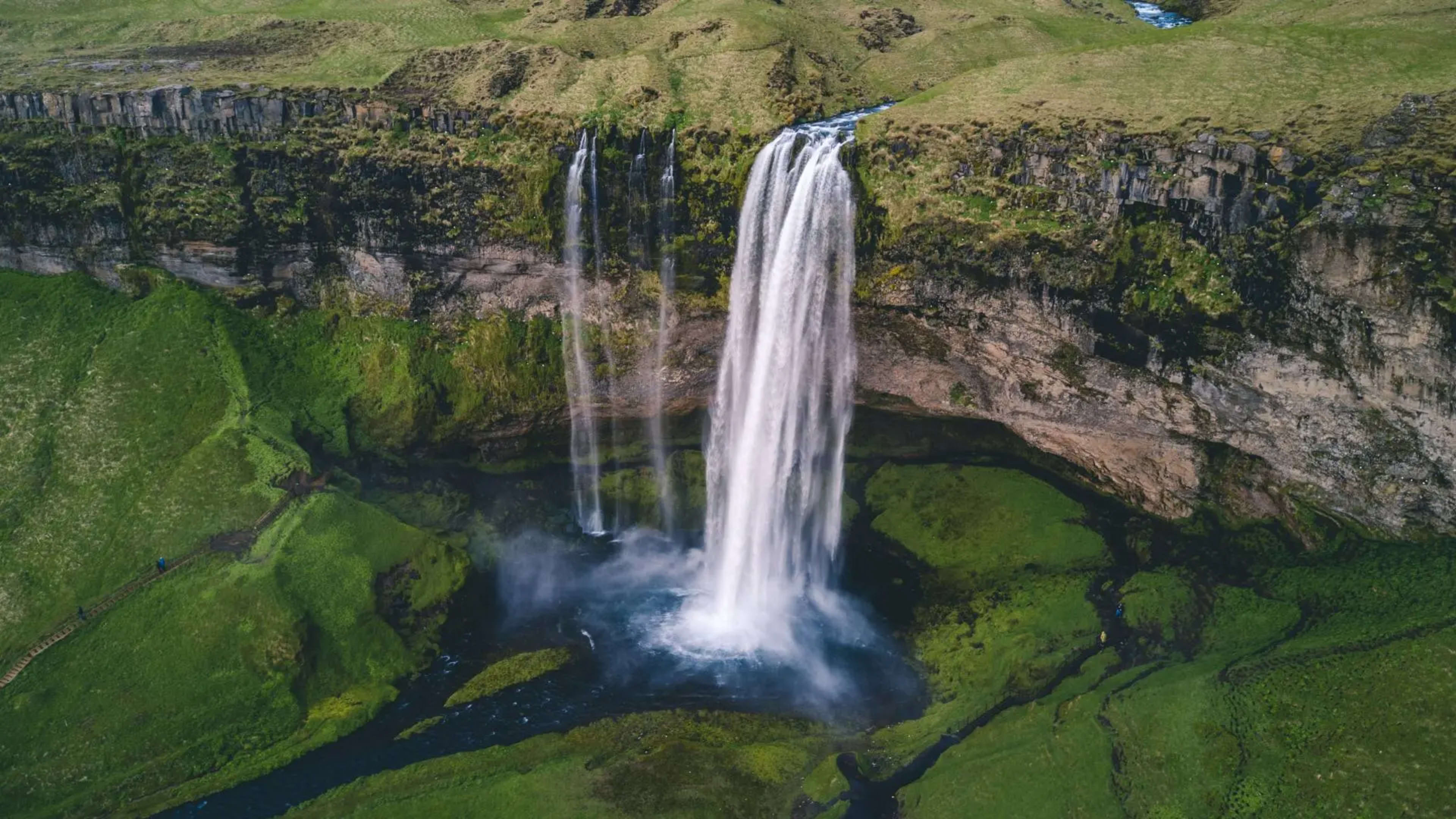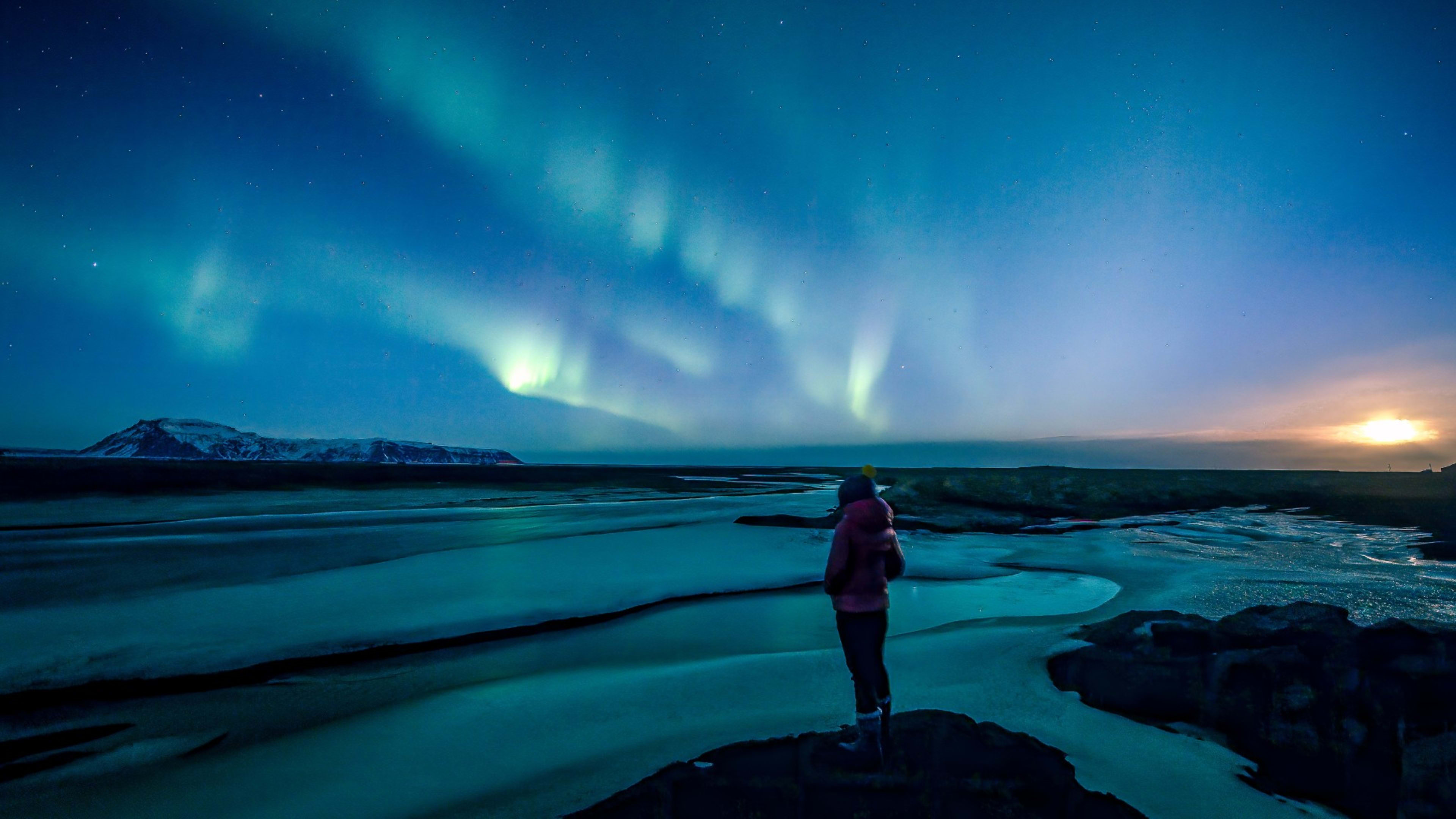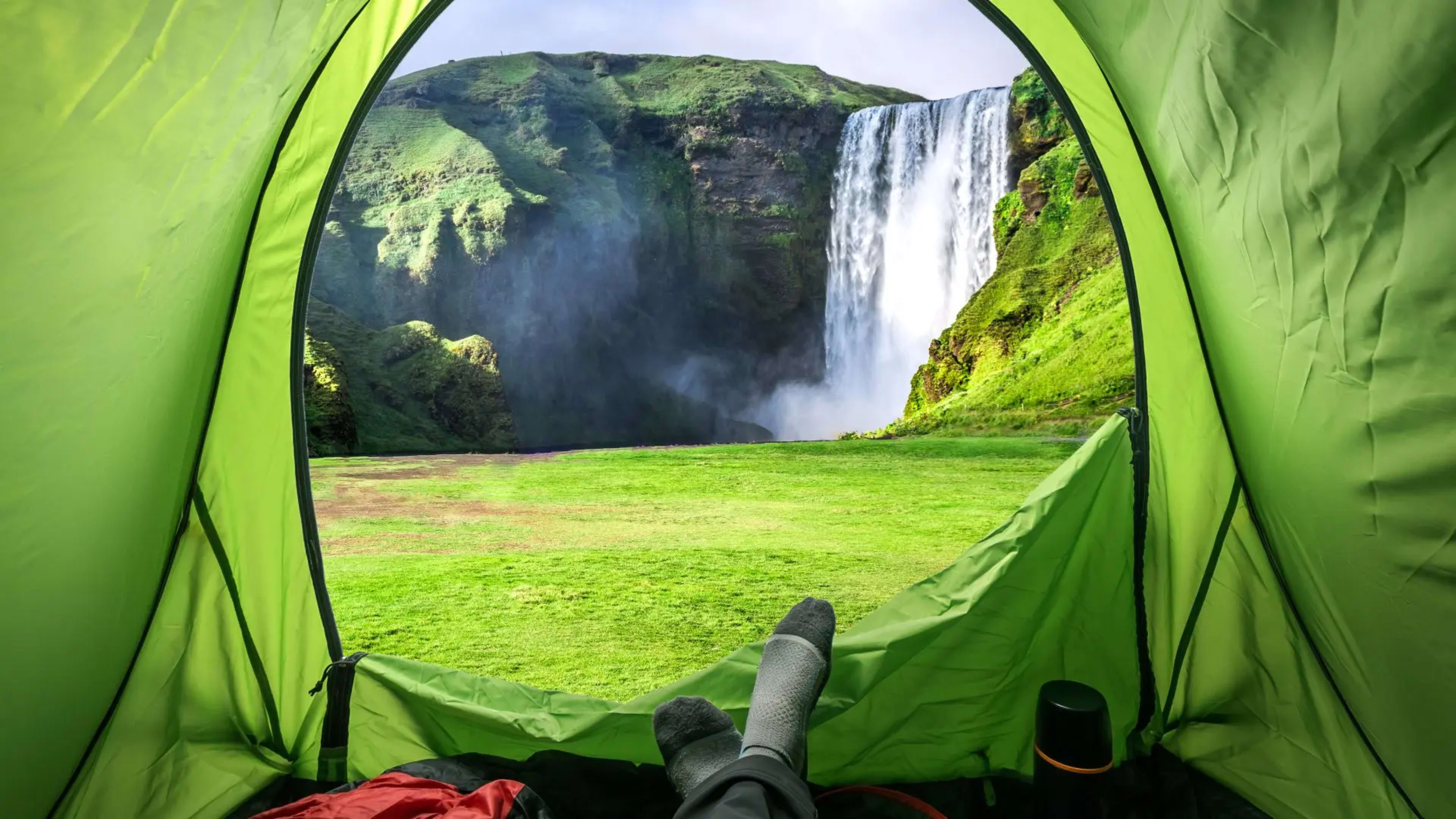Like many other Nordic countries, Iceland has a reputation as a costly vacation destination. You might even be in two minds about traveling here for this reason. To dispel any myths and fake news, in this article, we’re answering the big question: Is Iceland expensive?
The quick answer is: it depends on how you plan your vacation, who you book with, and, well, what you think of as expensive! Maybe a holiday staying in hotels is something you think is too pricey? Or do you prefer public transport, to save money and to feel more like a local?
Read on and you’ll find out:
- How much a trip is to Iceland on average
- 10 amazing cost-saving tips
- How to get the best out of your budget
- Experience the Land of Fire and Ice for less with these affordable vacation packages.
Is it expensive to go to Iceland?
It’s no secret that Iceland can be pricier than some other destinations. But with the right planning, you can still have an affordable vacation here without breaking the bank.
Plus, it’s one of the most unique places in the world. So what you’ll get to see and do while you’re here makes it worth every penny.
Iceland is home to some of the world’s most breathtaking natural wonders, including glaciers, geothermal hot springs, and active volcanoes. In fact, many of these attractions, including the famous Golden Circle, are completely free to enjoy!
Iceland is also one of the safest and easiest countries to get around, making it the ideal place to plan a holiday.
- Go on a Golden Circle tour & discover Iceland's most loved attractions.
- Related: Your complete guide to the Golden Circle route.
How much is a trip to Iceland?
Let’s start with the overall numbers and then break it down.
The average cost of a tour in Iceland is ISK 32,500 per person, per day. Thousands of anything might sound like a lot, but this is in Icelandic Króna, the local currency of Iceland. When exchanged, it’s around €217, US$233, or £183*.
This includes accommodation, local transport, activities, and food. The way you plan and book all of these can make it more or less expensive. We’ll give you tips on how to travel to Iceland on a budget in the next section.
*[All calculations in this article were accurate at the time of writing but exchange rates change daily. For the latest rates, check out this currency converter.]
Breakdown of costs
Food
If you’re eating out, the average restaurant meal is between ISK 3,500–5,000 (€23–33/$25–36/£20–28). This is at the lower end of the average, and can easily climb to ISK 6,000–8,000 (€40–53/$43–58/£34–45) if you go out to high-end restaurants.
The good news is that Iceland has lots of dining options, so you can usually find something within your budget. This is especially true in Reykjavík, which is packed with food halls, street food, and casual eateries.
For a list of top places to eat for a range of budgets, check out these guides to the best restaurants in Reykjavík and best restaurants in Iceland.
Alcoholic drinks
People often say that it’s expensive to drink out in Iceland and yes, it will definitely be pricier than in many other places. The average cost of a draft beer in a Reykjavík bar is around ISK 1,400 (€9/$10/£8).
You’ll be able to find cheaper places and drinks. But if you’re on a budget, you may want to skip going out drinking or save it as an occasional treat. Other tips include buying some bottles at the duty free when you land at Keflavík Airport, and checking out happy hour deals.
Good to know: Tipping isn’t a big deal in Iceland. You can leave some change, but large tips are not expected. And don’t bother trying to add up the tax, as it’s already included in the price!
- Learn more about Reykjavík's bars & nightlife in the Travel Guide.
Accommodation
Based on 2 people sharing one basic hotel room, the average price is around ISK 20,000 (€133/$145/£114) per night. In the high season (summer), that cost is closer to ISK 30,000–35,000 (€200–234/$218–254/£170–200).
But you could save some money if you go camping or stay in hostels.
Activities
Daily activity costs for the average traveler will be around ISK 7,500 (€50/$54/£43). This includes museums in Reykjavík and beyond, day tours, and other fun stuff you can fill your days with.
Costs can again climb up fast if you want to go on unique experiences, such as snorkeling between continents, spa retreats, and guided ice cave tours.
Local tip: It’s easy to use credit cards in Iceland, especially in Reykjavík. In fact, if you don’t have extra charges while abroad, it can be an efficient way to pay for activities, meals out, and more during your trip.
Just keep in mind you might need to enter a PIN at some places like gas stations. If you're not used to using a 4-digit PIN back home, it's a good idea to set one up before you travel.
- Discover the top things to do in Reykjavík.
Transportation
The best way to see more of the country is to rent a car. You could easily take day trips to the south coast or drive around the entire island on an Iceland Ring Road trip.
Public transport is also an option, but it might not always take you directly to the sights you’d like to see. Renting a car will give you the freedom to set your own pace and pull over at any attraction or breathtaking view as well!
The average daily cost to rent a small car in Iceland is roughly ISK 9,000 per day (€60/$65/£51). One other cost that comes with a rental car is fuel, which is around ISK 300–400 per liter (€2–2.70/$2–3/£1.70–2).

Another transport cost you have to keep in mind is the shuttle bus from Keflavík Airport to Reykjavík. Generally speaking, it’s the cheapest and most efficient way to reach the capital. Prices start at around ISK 6,700 (€44/$48/£38) for a return ticket.
For a taxi fare, the average cost for a one-way trip from the airport is around ISK 20,000 (€134/$145/£114). So if you’re looking to make the most of your budget, it’s best to skip this option!
On the other hand, you might pick up your rental car from the airport, or your tour company might include a private transfer as part of your package.
When you book a bus tour or privately guided vacation with Iceland Tours, you get airport transfers and other local transport included.
- Check out these self-drive tours in Iceland for the road trip of a lifetime.
- Related: How to get around Iceland.
How to see Iceland on a budget
The more you read through this article, the more we hope you understand that a vacation in Iceland doesn’t have to be expensive. And yes, it’s possible to visit Iceland on a budget.
Here are our 10 tips to lower your average expenses and visit the Land of Fire and Ice for less:
1. Look out for airline deals
You’ll notice we didn’t include flights in our total cost above. This is because it will vary wildly depending on where you’re coming from. For example, the cost of a flight from the UK will probably be cheaper than one from the US.
You can often get a better deal by looking at airlines that serve your local airport hub. Another way to cut costs is by joining a rewards program or spending your air miles.
2. Try camping
Camping is a very popular way to spend your nights in Iceland on a budget, as the cost is much lower than that of hotels. Make sure to come between June and August, when it’s warm enough to camp, to enjoy this way of seeing the country.
Campsite fees are usually around ISK 1,500–3,500 (€10–23/$11–25/£9–20) per night. This alone could bring down your daily accommodation costs by ISK 18,500 (€124/$133/£104).
Good to know: Iceland Tours includes a rental car and camping gear for the duration of your stay if you book a camping holiday. An added bonus is that it allows you to keep your checked baggage light.
- Check out these camping tours in Iceland.
- Related: Your complete guide to camping in Iceland.

3. Book early
Another way to save money is by booking in advance. This goes for your flights, car rental, activities, and overnight stays.
Accommodation in Iceland can sell out really early for the high season, which is between June and August. To have the best choice within your price range, make sure to book 6 months to a year in advance.
By booking ahead, you can spread the cost of your trip. At Iceland Tours, you can reserve your preferred tour and travel date with only a 5% deposit. This way, you have longer to save and get excited about your upcoming trip!
- Find out more reasons to book with us.
4. Travel to Iceland in winter
You’ll find that accommodation is generally cheaper during this time of year. You may think it’s too cold, but it’s not as freezing as you’d imagine! This is thanks to the Gulf Stream, which moderates Iceland’s climate.
Plus, there are so many perks to visiting in winter. Think of the beautiful snowy mountaintops, glittering waterfalls, and the famous Northern Lights.
By comparing 2 of our 7-day tours, between winter and summer, you’ll find that you could save around €300 ($326/£256) per trip.
- Explore frosted landscapes on a winter tour of Iceland.
- Related: Iceland in winter – must sees and must dos.

5. Find free hot springs
Were you looking at the Blue Lagoon spa, but it’s too expensive for your budget? Don’t worry, you can still experience Iceland’s geothermal waters without overspending.
Venture into the countryside to uncover wild hot springs. Not only will this allow you to travel off the beaten path, but it’ll make for a great photo opp! Most of these natural pools are completely free, while some charge a small fee.
Another wallet-friendly way to experience Iceland's bathing culture is to join the locals at Reykjavík's city pools. They're heated and open all year, and many have family-friendly facilities like slides and shallow pools.
- Go hot spring hopping on a family vacation in Iceland.
- Find Iceland’s best hot springs & swimming pools in these guides.
6. Bring a water bottle
The tap water in Iceland is some of the purest in the world – yes, it’s definitely worth boasting about! So bring a reusable bottle and top up at cafés, restaurants, pools, and water dispensers across the country.
Not only is this a money-saver, but it’s also more eco-friendly than buying plastic bottles during your trip.
Local tip: Run the water for a few seconds to remove any sulfur smell (especially in warm water). The smell is completely natural because of the water’s geothermal origins, and it’s completely safe to drink.
7. Book a tour or accommodation that includes a meal
Vacation packages or hotels that include a complimentary meal are a great way to save money while you’re in Iceland.
At Iceland Tours, all your accommodation includes a daily continental breakfast. That saves you some money and allows you to be well-fed before setting off on your day’s activities.
- Travel with like-minded adventurers on a guided group tour of Iceland.
8. Go hiking
One of the best ways to explore Iceland’s jaw-dropping natural beauty is on foot. Visit from June to September and you could spend your time hiking in the wilderness.
Take in all the amazing natural wonders, including lava fields and colorful mountains, for free!
- Explore the outdoors on an adventure tour of Iceland.
- Discover the best day hikes in Iceland.

9. Look up free tours
If you have a free day in Reykjavík or other larger towns in Iceland, you may want to check if there are free walking tours. Stroll through vibrant neighbourhoods, learn about the local art scene, and uncover hidden gems – all while keeping your budget healthy.
You usually are expected to tip at the end of free tours, but it’s still an inexpensive way to explore Iceland’s culture and history.
10. Try the street food
Restaurant meals are one of the biggest expenses you’ll have in Iceland.
But you don’t have to eat out to treat yourself. You could get a pastry to go or stop by Reykjavík’s Bæjarins Beztu Pylsur for a famous Icelandic hot dog. These are usually cheaper than sit-down meals but no less satisfying!
On the other hand, you can buy and make your own food, or stock up on snacks at grocery stores.
- Discover some of the best food in Iceland at Reykjavík’s top street food & food halls.
Bonus reminder
Please book travel insurance. We know that it’s an additional expense and, if all goes well, it will be a 'lost cost'. But if something doesn’t go right, it could save you money, protect your trip and your health.
- Check out these useful health & safety tips before your trip to Iceland.
Don’t forget to treat yourself
While visiting Iceland, especially with all our useful tips, it should be easy for you to cut costs and travel on a budget.
Whatever you do, make sure to include some unique experiences to your itinerary. Or at least one amazing thing, whether that’s going puffin or whale watching, tasting the local cuisine, or walking on a glacier.
You won’t regret it and it might make your time in Iceland even more memorable.
- Related: Awesome things to do in Iceland.
How to book a budget trip in Iceland
You can now answer the big question yourself: Is Iceland an expensive country? It doesn’t have to be! The easiest and most efficient way to book a budget trip to Iceland is through a local company that offers excellent value for money.
With Iceland Tours, you get affordable vacation packages that include places to stay, local transport, and a detailed itinerary. And while most trips come with daily breakfast, some also include activities.
Plus, you can customize your trip depending on your budget. For example, if you’re doing a self-drive tour, you can choose your car rental and accommodation type.
When you’re ready to book, our team can help you tailor a tour to fit your budget. All it takes to secure your vacation to the Land of Fire and Ice is a 5% deposit.





